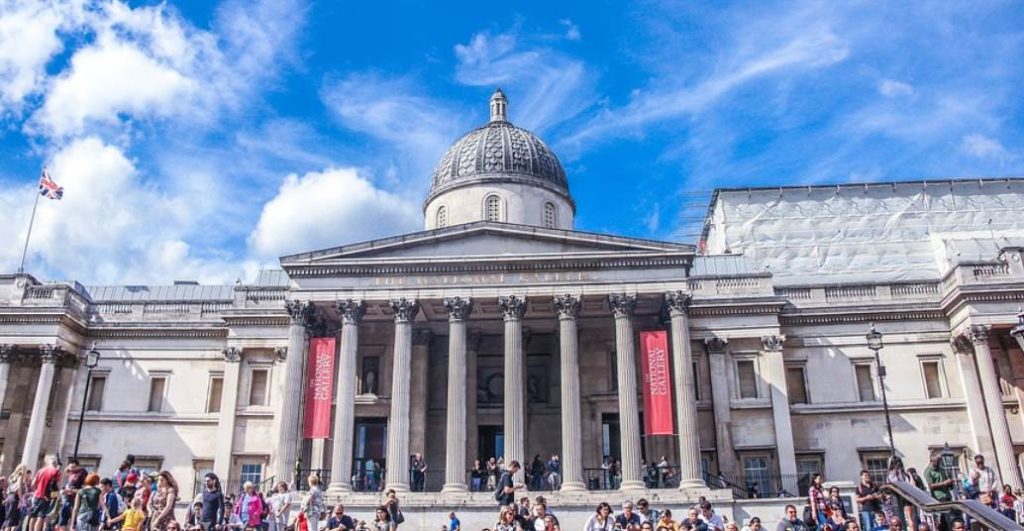Every renowned artist has to start somewhere, and this is one of the first monumental paintings by Raphael.
He was one of the leading Renaissance artists of the early 16th century and became a source of inspiration for numerous artists who followed him.
In this article, we’ll take a closer look at some of the most interesting facts about the Mond Crucifixion by Raphael, a remarkable Renaissance painting.
1. It was painted during the first years of Raphael’s career
Raffaello Sanzio da Urbino (1483-1520) was born in the Italian city of Urbino, a city in the Marche region in the east of Italy.
He showed great artistic talent from a young age which he inherited from his father, a lesser-known painter named Giovanni Santi (1435-1494).
Both his parents died in the early 1490s and although it’s clear he received some sort of training, the details of his apprenticeship remain obscure.
His first commission was the Barnonci Altarpiece which was completed between 1499 and 1500. Only fragments of this work remain today.
He surely produced a lot of works in between but it’s possible that the Mond Crucifixion was his second major commission, completed between 1502 and 1503.

2. It was commissioned to decorate a funerary chapel in a city in Umbria
Just like his first commission, this monumental work of art was commissioned to decorate a church in Città di Castello, a relatively small city just southwest of Urbino and just north of Perugia.
It was commissioned by a rich wool merchant named Domenico Gavari to decorate his funerary chapel at the church of San Domenico in this city.
The painting hung here in one of the side chapels at the end of this church. This building was completed between 1400 and 1424 and is otherwise humble in design.
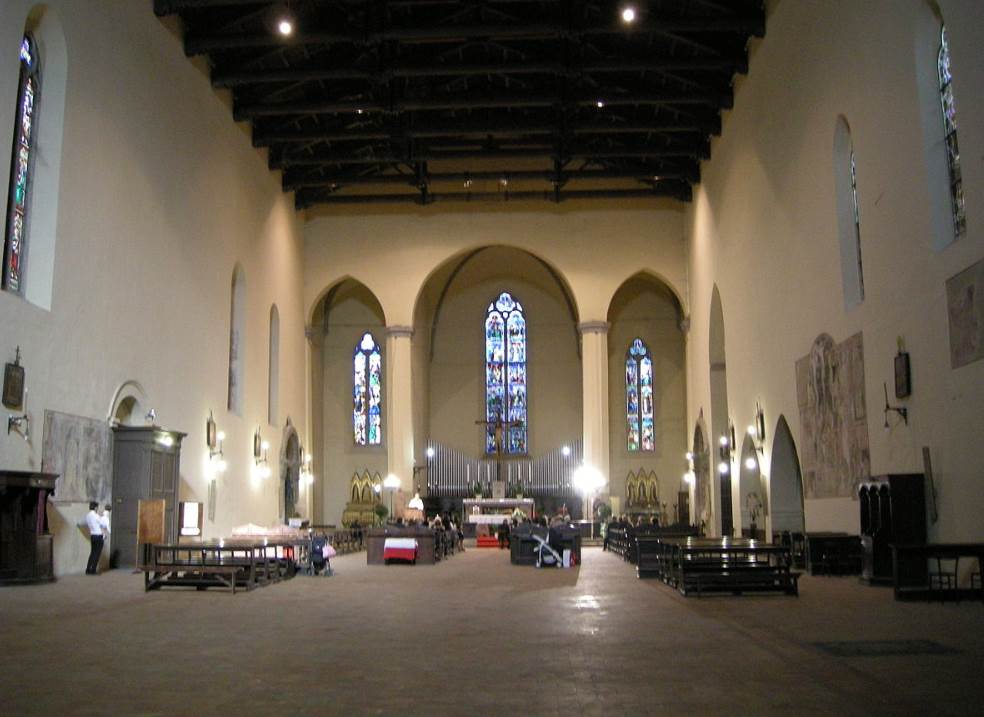
3. The painting depicts a traditional crucifixion scene in an Umbrian landscape
The side chapel inside the church was dedicated to Saint Jerome and that’s the reason why Raphael included the saint in this work.
Two angles float next to Jesus Christ as the sky is decorated with a gold leaf sun and a silver moon.
The two kneeling figures are Saint Jerome and his mother Mary. Both look towards Jesus while the two other figures, Mary Magdalene and Saint John the Baptist glance towards the viewer.
INRI is added on top of the cross, a reference to “IESVS NAZARENVS REX IVDÆORVM” or “Jesus the Nazarene, King of the Jews.”
The foot of the cross bears the artist’s signature which reads “RAPHAEL/ VRBIN / AS /.P.[INXIT]” or “Raphael of Urbino painted this.”

4. Raphael was influenced by a similar painting from an Umbrian master
Raphael spent quite some time in Perugia, one of the largest cities in the region.
The relationship between him and Umbrian master Pietro Perugino (1446-1523) remains unclear, but 16th-century historian Giorgio Vasari claimed that he was his master.
Whether or not Perugino trained Raphael is unknown, but it’s clear that he was influenced by the Perugian master of the Renaissance.
The Mond Crucifixion bears a striking resemblance to one of his paintings called the Monteripido Altarpiece. This work was completed in 1502, the year that Raphael started working on his version of the same subject.
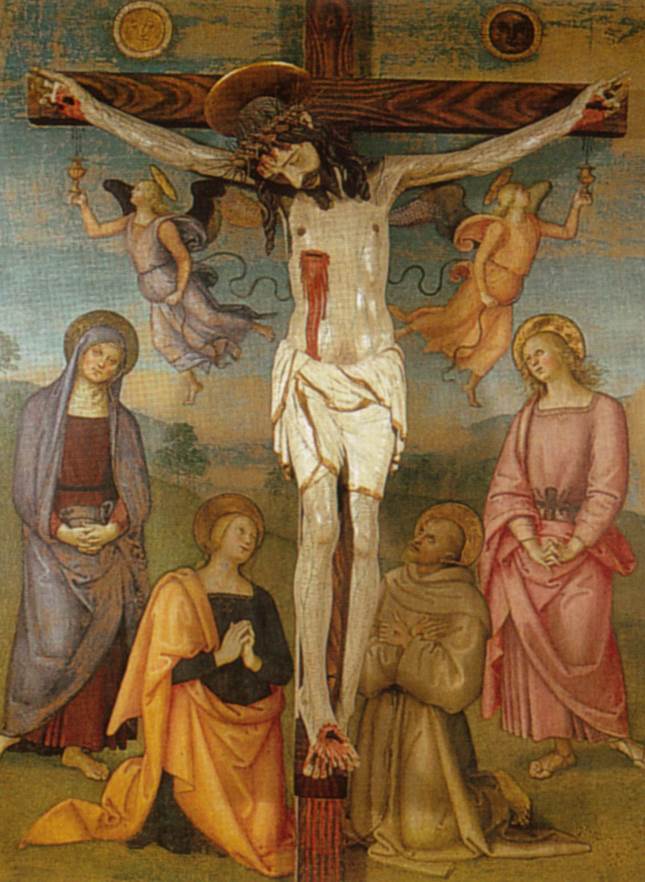
5. There are two surviving panels of the painting’s predella
The Mond Crucifixion is a large altarpiece that was accompanied by 3 predellas of which 1 is lost. These were attached to the bottom of the main work and each had dimensions of 26 × 43 centimeters (10 × 17 inches).
Because the chapel was dedicated to Saint Jerome, these had topics referring to the saint’s life.
The first predella panel is located at the Museu Nacional de Arte Antiga in Lisbon, Portugal, and is called “Eusebius of Cremona raising Three Men from the Dead with Saint Jerome’s Cloak.”
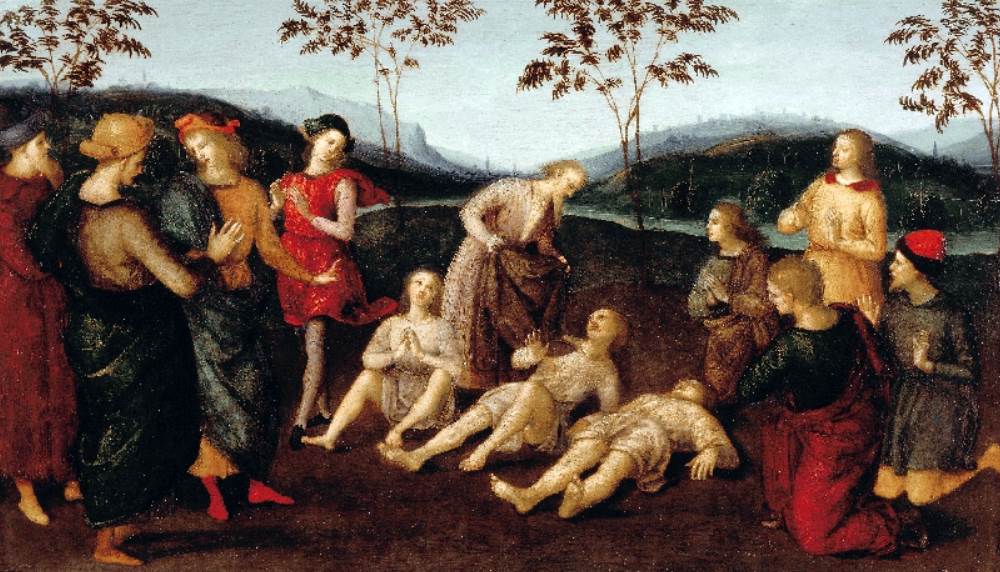
The second predella painting is located at the North Carolina Museum of Art in Raleigh, North Carolina, and is called “Saint Jerome saving Silvanus and punishing the Heretic Sabinianus.”
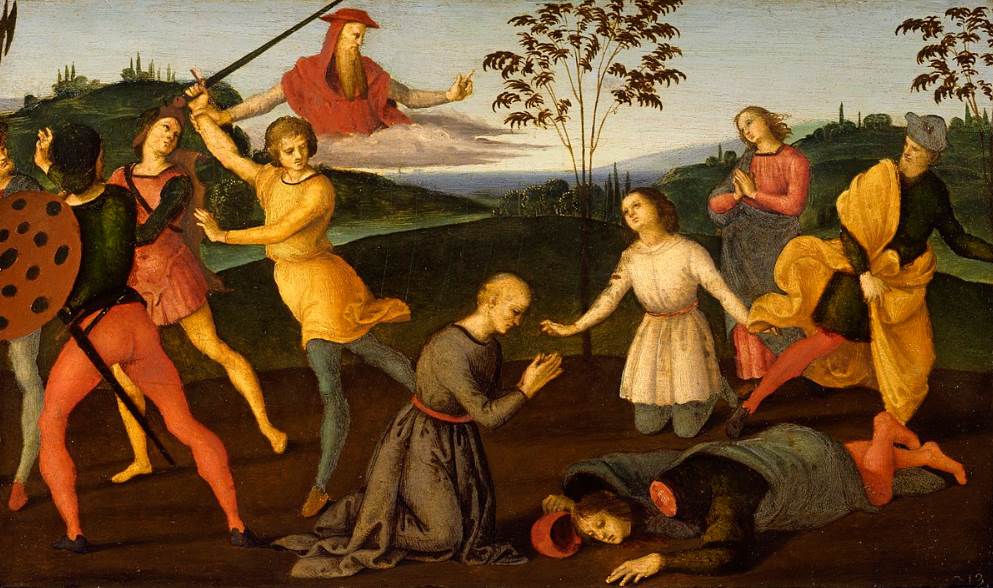
6. The painting was named after its previous owners
The painting is sometimes referred to as the “Gavari Altarpiece,” a reference to Domenico Gavari, the man who originally commissioned it.
It was owned by a German-born chemist who became a British citizen in the early 20th century named Ludwig Mond. He bequeathed it to the National Gallery in London.
The current name of the painting is a reference to the painting’s owner at that time.

7. How big is the Mond Crucifixion by Raphael?
The painting served as the altarpiece of a chapel inside a church. This means that it’s quite large as it covered the entire altar wall of this burial chapel.
The oil on Poplar wood painting has dimensions of 283.3 × 167.3 centimeters (111.5 × 65.9 inches).
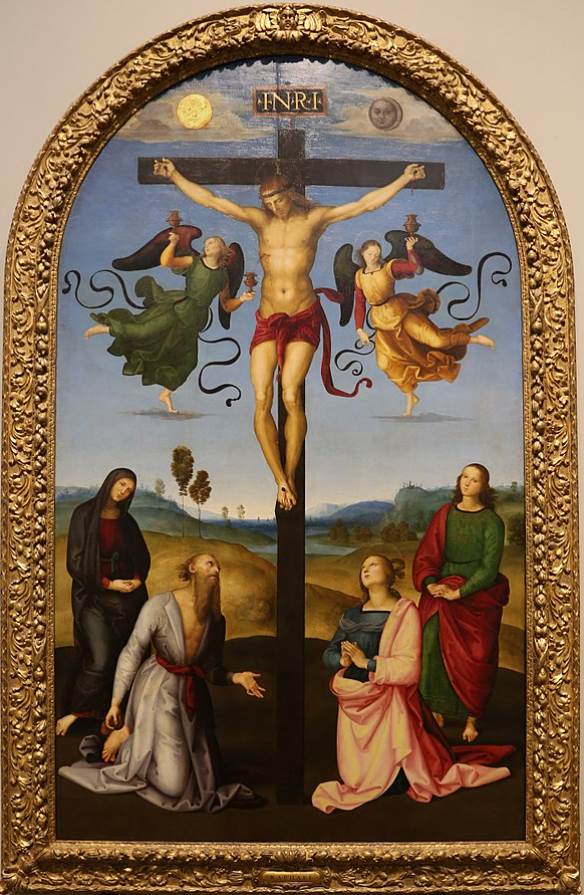
8. Where is the painting located today?
One of the most remarkable facts about the Mond Crucification is that it hung in situ for over 3 centuries at the church of San Domenico in Città di Castello.
It was acquired by Cardinal Fench, the half-uncle of Napelon, during his nephew’s reign as Emperor of France in 1808. He paid the sum of 2,500 scudi (a type of silver coin) for the work at the time, a hefty sum of money.
It was sold, together with the vast numbers of other fine works of art from the Fesch collection in 1845. It ended up in various English art collections before being acquired by Ludwig Mond in 1892.
Today, this magnificent work of art by Raphael can still be admired at the National Gallery, one of the most popular museums in London.
